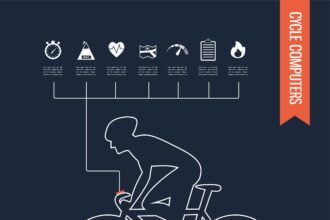It’s no secret that the medical and healthcare industries could use some enhancements. From outdated systems to interfaces that frustrate rather than facilitate, there’s a lot of room for improvement.
This is precisely where healthcare UX design comes into play, aiming to create environments where technology supports operations rather than hinders them. Consider, for instance, how seamlessly your fitness tracker could connect with your doctor’s office or how your mental health app could gently remind you to take moments for yourself. Furthermore, how hospital machinery could operate efficiently, freeing up valuable time for medical professionals. These enhancements in design can transform potentially stressful encounters with technology into supportive, seamless experiences.
So, what constitutes good design in healthcare? We spoke to Intechnic Healthcare UX agency about the best practices:
1. Prioritize Accessibility
Healthcare is essential for everyone, so accessibility in UX design is not just a feature but a necessity. A way to do this is to incorporate elements such as voice commands for those unable to use touchscreens, large buttons that are easy to tap, high-contrast visuals for the visually impaired, and menus that are straightforward to navigate. These features ensure that your products are usable by people with diverse abilities, making products more inclusive.
2. Emphasize Clarity and Simplicity
Accessing medical information shouldn’t be confusing. A well-designed UX simplifies the complex, presenting medical data through clear visuals and straightforward language. By making information easily digestible at first glance, you empower users to understand their well-being better and make informed decisions. Additionally, providing the option to explore detailed data supports those who wish to dive deeper, catering to varied needs.
3. Maintain Consistency
Creating a familiar environment across all interfaces minimizes confusion and boosts confidence in your technology. For instance, use consistent icons, button placements, and interaction patterns across different platforms. This familiarity helps people navigate your applications more easily, making the entire experience more intuitive.
4. Ensure Data Security and Privacy
Keeping patient data secure and private is an essential part of the design process. You can achieve this by implementing strong encryption and strict access controls, which can help protect sensitive information. Additionally, by adhering to laws such as HIPAA and GDPR, you can demonstrate a firm commitment to user privacy, which in turn helps establish trust.
5. Engage Users with Interactive Feedback
Obtaining clear feedback from stakeholders is important for ensuring a user-friendly experience. To achieve this, users should receive visual, auditory, or tactile cues of their actions, such as confirmations after submitting forms or alerts when errors occur. This immediate response prevents mistakes and ensures that individuals remain informed throughout their interaction with the system.
6. Design for Real Environments
It’s important for your product to work well in the environments where it will be used the most. For instance, if it’s a device, it should be able to function effectively even in noisy hospital settings and be easily readable even in bright outdoor light. By taking into account these practical aspects, you can ensure that your technology is always functional and user-friendly, no matter the situation.
7. Test with Real Users
Testing with actual users is essential to understand how your software performs in real-world scenarios. Therefore, regular feedback from medical professionals and patients is an invaluable part of refining the UX. This ongoing process helps ensure that the tech not only meets the practical needs of individuals, but also ensures that it is easy to use.
8. Incorporate Interoperability
For systems to be truly effective, they must work seamlessly with other systems. The best way to do this is to ensure that your devices and apps are able to communicate and exchange data with other systems through standard protocols. Not only will this enhance their overall utility, but it can also support more coordinated patient care.
Conclusion
At the end of the day, healthcare UX is about more than just making things look good. It’s about creating tools that empower us to take better care of ourselves and each other. When technology is developed with care, it can transform our ability to manage and improve our health. That’s a future worth designing for.








